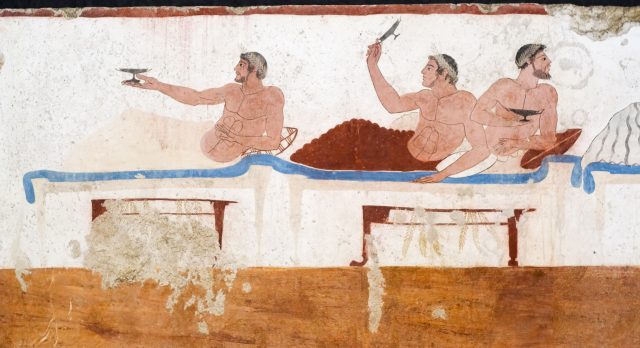This website uses cookies so that we can provide you with the best user experience possible. Cookie information is stored in your browser and performs functions such as recognising you when you return to our website and helping our team to understand which sections of the website you find most interesting and useful.
Archaeologists uncover elaborate ancient winery among Roman ruins
Archaeologists have stumbled upon a Roman winery by chance amid the ancient ruins of the Villa of Quintilii near Rome.

An ancient winery has been discovered at the ruins of the Villa of Quintilii while archaeologists searched for a chariot arena built beneath it.
Dr Emlyn Dodd, assistant director at the British School at Rome, is an expert on ancient wine production, and has published the archaeological findings in an article for scholarly journal Antiquity. Dodd called the ancient complex “an amazing mini city completed by a luxury winery for the emperor himself to indulge his Bacchic tendencies”.
The winery was discovered by chance as archaeologists from the Italian ministry of culture were excavating the area for the starting posts of the chariot racing track, built by emperor Commodus in the second century AD.
NEW archaeologists in Rome discover an opulent winery, almost 2,000 years old, which may have been used to entertain imperial guests. ➡️ https://t.co/3pj941w7HV pic.twitter.com/yHm2SyGWbn
— ntiquity Journal (@AntiquityJ) April 17, 2023
Situated just beyond the perimeters of ancient Rome, the luxurious villa was on an enormous complex, consisting of a theatre, a chariot arena, marble bath complex, and winery. It covered nearly 24 hectares of land and surrounded a landscape of orchards, agriculture and other lavish villas.
The villa featured five fountains, three for the young wine where grapes were suspected to have flowed after being trodden. Impractical but luxurious marble lined the treading areas where slaves would stamp the fruit over the slippery ground before it went to be mechanically pressed.
It is thought that the flow would then have channelled into vast storage jars, set in the ground for fermentation to take place, a standard practice for winemaking of the time.
Open dining areas set around a three sided courtyard suggest that the emperor would have dined alongside the flow of young wine gushing from the three lavish fountains. It is thought that this production was designed both for the practice of winemaking and for entertainment of the emperor and his guests.
The original owners, the Quintilii brothers, were killed by the emperor Commodus who then reigned from AD177-192. Brick stamps and building techniques date the chariot track to Commodus rule whilst the stamp of Gordian over a wine collection vat suggests the emperor of this name was responsible for the subsequent winery.

